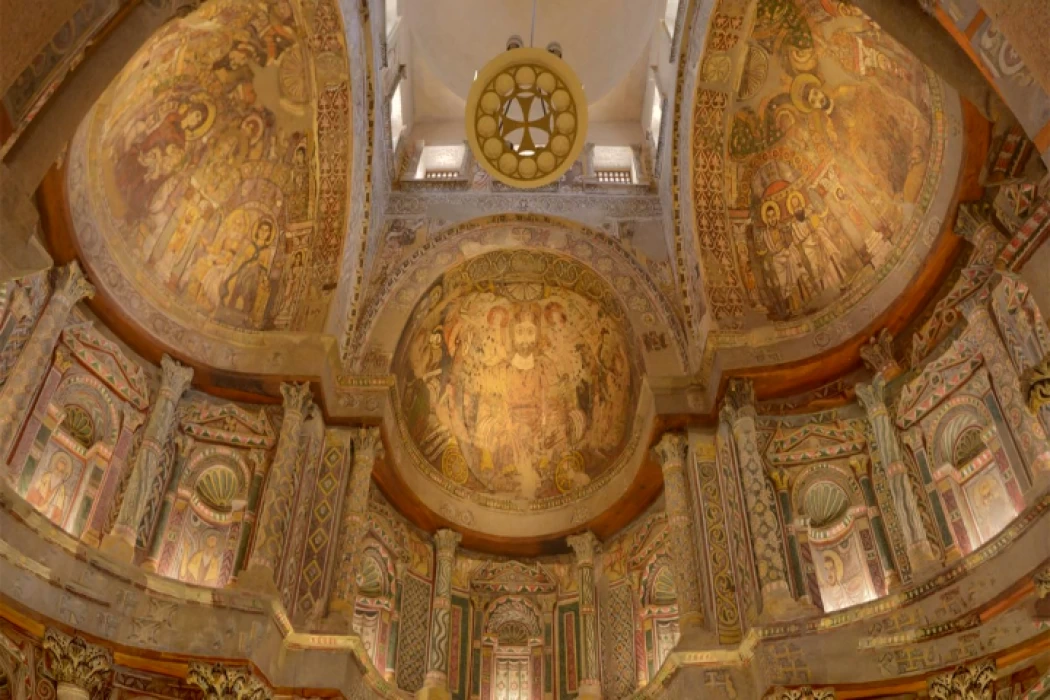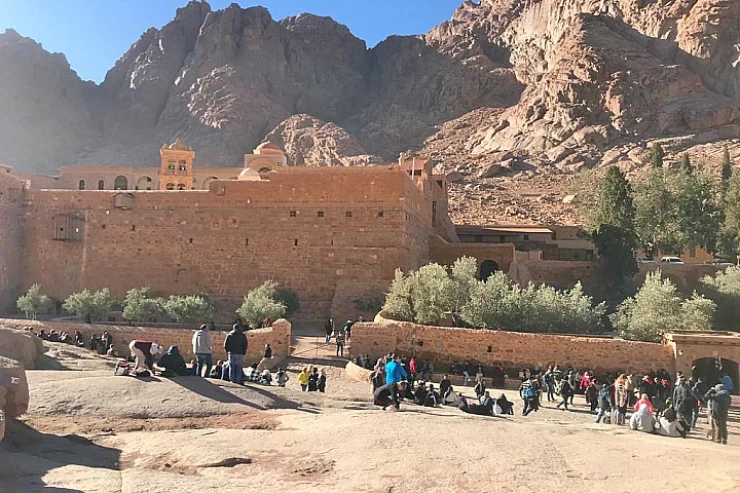
The Red Monastery in Sohag | The Monastery of Apa Psoi
The Red Monastery in Sohag | The Monastery of Apa Psoi
The Red Monastery in the desert of Sohag is considered one of the most important Coptic places in Egypt. The Red Monastery is located in the mountainous region west of the city of Sohag, which was designed in the form of a basilica, and the remaining part of the “skeleton” dates back to 500 AD and the church is attributed to St. Beshay, and St. Begol.
The Red Monastery Church was built in the fourth century AD by Queen Helena, who built the Church of the Holy Sepulcher, and the icons of the archaeological structure are very important, as there are only 3 of them in the world, one in the Church of the Holy Sepulcher and one in the Church of the Red Monastery and the last in Syria.
The monastery was built on the ruins of a pharaonic temple and includes columns of the Pharaonic and Roman styles, as well as Coptic inscriptions. It was called by this name because its columns were built of red granite, the same type of stones that were used in the construction of Pharaonic temples, and the monastery is considered the most important archaeological station for tourists, because it is one of the most important monuments remaining from Byzantine architecture, and the monastery and icons were restored in 2002, at a cost of 30 million dollars.
The nave was directly connected to the temple, where the priest offered the mass prayers, and now there is a new wall separating the temple and the nave, and the fortress on the southern side was added in the Middle Ages, with the construction of the walls of the nave, and the frescoes of the dome structure date back to the sixth and seventh centuries AD.
The monastery was exposed to fire twice, the first during Roman rule and the second by the Berbers, and only the church and the fortress, which are located on the southern side of the church, remain. There are also remnants of architectural parts to the north of the church believed to be parts of an industrial city. Drawings of religious people and inscriptions show the diversity in colors, shapes, spaces, and lighting. The structure was restored in 2002 and 2012, and the murals, which were covered with smoke and dust, became visible for the first time in several centuries.
The main church: It is a rectangular area divided into a nave consisting of three wings. In the southwestern corner, there is an attached church known as the Virgin Mary.
The fortress: It is likely that it dates back to the era of Empress Helena. It is an almost square building, and usually contains a group of units that enable monks to live for a long time inside it, such as a church, cells, stores, and water sources.















